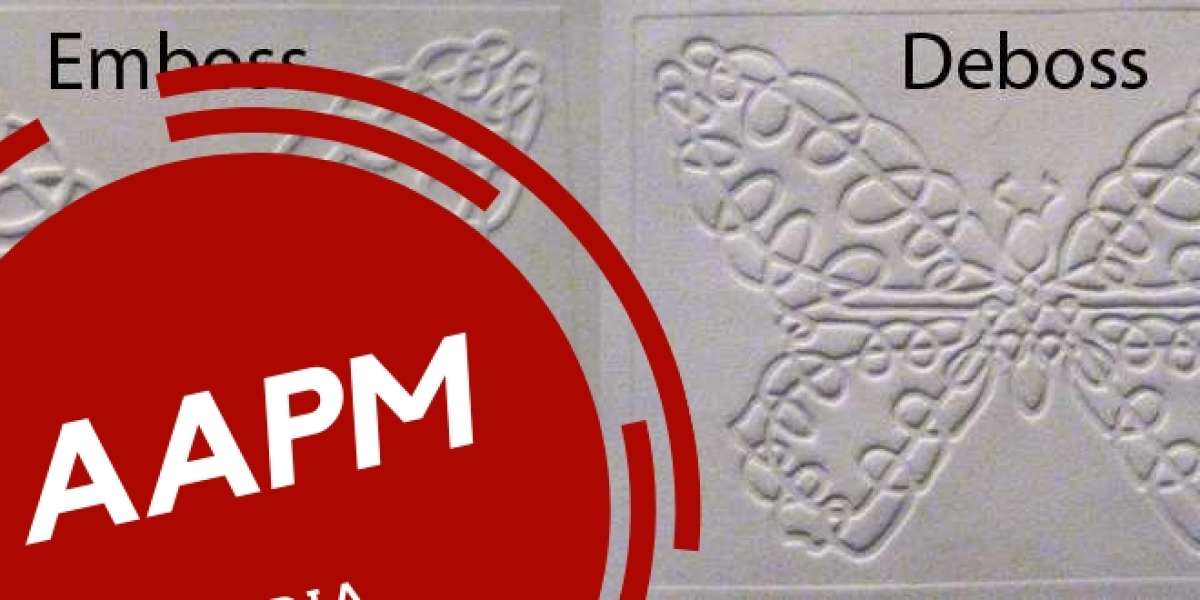In today's competitive market, creative packaging plays a crucial role in attracting customers and differentiating products. A well-designed package not only protects the product but also enhances its appeal, conveys the brand message, and encourages purchase. Here, we explore various aspects of creative packaging designs that stand out and make a significant impact on consumer choices.
Importance of First Impressions
First impressions are crucial in packaging. A product's packaging is often the first interaction a consumer has with a brand. An eye-catching design can grab attention and generate interest.
- Attractive designs encourage consumers to pick up the product.
- Colors, shapes, and materials all contribute to making a strong first impression.
- Packaging that tells a story or evokes emotions can create a lasting impact.
When a product is on a shelf among many competitors, the design is what makes it stand out. Brands use unique shapes, vibrant colors, and engaging graphics to draw attention. For instance, bright colors can attract the eye, while minimalistic designs can convey elegance and sophistication.
Utilizing Unique Materials
Choosing the right materials for packaging is essential. Unique materials can make packaging stand out and convey a brand's values.
- Sustainable materials like recycled paper, bamboo, or biodegradable plastics appeal to eco-conscious consumers.
- Premium materials like glass or metal can communicate luxury and quality.
- Innovative materials can also provide functional benefits, such as better protection or easier recyclability.
For example, many brands are moving towards sustainable packaging solutions to reduce environmental impact. This not only enhances the brand's image but also appeals to the growing segment of eco-conscious consumers. Using recycled materials or biodegradable options shows a commitment to sustainability and can differentiate a product from competitors.
The Role of Embossing and Debossing
Embossing and debossing add a tactile dimension to packaging design. These techniques involve creating raised (embossing) or recessed (debossing) designs on the surface of the packaging.
- Embossing can highlight logos or key elements, making them stand out visually and physically.
- Debossing adds a subtle, elegant touch that can enhance the perceived quality of the product.
- These techniques provide a sensory experience that can make the packaging more memorable.
Brands often use embossing and debossing to emphasize their logos, creating a premium look and feel. This added texture not only catches the eye but also invites touch, enhancing the overall consumer experience.
Incorporating Functional Design Elements
Functionality in packaging is as important as aesthetics. Functional design elements can improve user experience and add value to the product.
- Resealable packaging keeps products fresh and reduces waste.
- Easy-to-open packages enhance convenience for consumers.
- Multipurpose packaging that can be reused or repurposed adds extra value.
For instance, resealable pouches for food products ensure freshness, while easy-open tabs make the product more accessible. Packaging that can be repurposed, such as jars that can be used for storage, also provides added value and encourages consumers to choose one product over another.
Customization and Personalization
Customized and personalized packaging can create a strong connection with consumers. Tailoring packaging to specific audiences or occasions can make products more appealing.
- Limited edition designs create exclusivity and urgency.
- Personalized packaging with names or messages makes products feel special.
- Custom packaging for different demographics can increase relevance and appeal.
Brands like Coca-Cola have successfully used personalized packaging to boost sales. By printing popular names on bottles, they created a personal connection with consumers, encouraging them to buy and share their products.
Minimalist Designs
Minimalist packaging designs can also be very effective. Simplicity can communicate clarity, quality, and elegance.
- Clean lines and simple graphics can make a bold statement.
- Limited color palettes focus attention on key elements.
- Minimalist designs can convey a sense of luxury and sophistication.
A minimalist approach can also make packaging more environmentally friendly by reducing the amount of material used. This approach appeals to consumers who prefer a clean, uncluttered aesthetic.
Interactive Packaging
Interactive packaging engages consumers and creates a memorable experience. This can include:
- QR codes that link to digital content.
- Augmented reality elements that bring the packaging to life.
- Designs that encourage play or interaction.
Interactive elements can enhance the consumer experience and create a stronger connection to the brand. For example, a QR code that links to recipes or product information adds value beyond the product itself.
Storytelling Through Packaging
Packaging can also tell a story, adding depth to the consumer experience. Storytelling elements in packaging design can:
- Communicate the brand’s history or values.
- Highlight the product’s origin or ingredients.
- Create a narrative that resonates with consumers.
Brands that use storytelling in their packaging can create a deeper emotional connection with their audience. For instance, a coffee brand might use packaging to tell the story of the farmers who grew the beans, adding a personal touch that enhances the product's appeal.
The Power of Color and Graphics
Color and graphics play a vital role in packaging design. They can evoke emotions, convey messages, and differentiate products.
- Bright, bold colors attract attention and create excitement.
- Soft, muted tones can convey calmness and elegance.
- Graphics and illustrations can tell a story or highlight key product features.
Choosing the right colors and graphics can significantly impact a product’s success. Brands often conduct extensive research to understand how different colors and designs affect consumer perceptions and choices.
By understanding and implementing these creative packaging design strategies, brands can ensure their products not only stand out on the shelf but also resonate with consumers, driving engagement and sales.
Sustainable Packaging Solutions
Incorporating sustainability into packaging design is not just a trend but a necessity in today's market. Consumers are increasingly aware of environmental issues and prefer brands that prioritize eco-friendly practices.
- Using recyclable materials reduces waste and conserves resources.
- Compostable packaging materials like plant-based plastics break down naturally.
- Minimalist packaging designs use fewer materials, reducing environmental impact.
Brands that commit to sustainable packaging can build loyalty among eco-conscious consumers. For example, using plant-based plastics or recycled cardboard can significantly reduce a product's carbon footprint. Additionally, clear labeling about a product's sustainability features can educate consumers and encourage responsible disposal practices.
Smart Packaging Technology
Advancements in technology have led to the development of smart packaging solutions. These innovative designs can enhance user experience and provide added value.
- NFC (Near Field Communication) tags can provide product information or promotional content.
- Temperature-sensitive packaging can indicate if a product has been stored correctly.
- RFID (Radio Frequency Identification) tags help with inventory management and product tracking.
Smart packaging not only enhances the consumer experience but also improves supply chain efficiency. For instance, NFC tags can connect consumers to digital content, such as product tutorials or brand stories, enhancing engagement and loyalty. Temperature-sensitive packaging is particularly useful for perishable goods, ensuring they remain safe and fresh from production to consumption.
Multi-Sensory Packaging
Engaging multiple senses can create a memorable and enjoyable experience for consumers. Multi-sensory packaging appeals not just visually but also through touch, smell, and even sound.
- Textured surfaces can make packaging feel more luxurious.
- Scented packaging can evoke emotions and enhance the product experience.
- Sound elements, like a satisfying click when a lid is closed, can provide a sense of quality.
Incorporating these elements can differentiate a product in a crowded market. For instance, a skincare brand might use a subtle fragrance in its packaging to evoke a sense of relaxation and well-being, enhancing the overall consumer experience. Textured surfaces created through embossing or debossing can also add a tactile dimension that makes the packaging more engaging.
Innovative Shapes and Structures
The shape and structure of packaging can significantly influence its appeal and functionality. Innovative designs can make a product stand out and provide practical benefits.
- Unique shapes can attract attention and enhance brand recognition.
- Ergonomic designs improve user comfort and convenience.
- Space-efficient packaging reduces shipping costs and storage needs.
Transparent and Window Packaging
Transparency in packaging can build trust and highlight product quality. Clear windows or entirely transparent packaging allows consumers to see the product before purchase.
- Transparency showcases product quality and freshness.
- It can create a sense of honesty and openness.
- Clear packaging can also be aesthetically pleasing.
Products like fresh produce, baked goods, and premium cosmetics benefit from transparent packaging. Consumers appreciate the ability to see what they are buying, which can influence purchasing decisions. For example, a clear window on a box of chocolates can display the assortment inside, making it more enticing.
Packaging for E-Commerce
With the rise of online shopping, packaging for e-commerce needs to address different challenges compared to traditional retail.
- Packaging must protect products during shipping.
- It should be easy to open, yet secure enough to prevent tampering.
- Attractive packaging enhances the unboxing experience, which is often shared on social media.
E-commerce packaging should balance durability with aesthetics. Protective features like padded interiors and tamper-evident seals ensure products arrive in perfect condition. The unboxing experience can be a powerful marketing tool, with many consumers sharing their experiences on social media, which can drive brand awareness and loyalty.
Cultural and Regional Sensitivity
Packaging that reflects cultural or regional sensibilities can resonate more deeply with target audiences. Understanding local preferences and incorporating them into design can enhance appeal and relevance.
- Cultural symbols and motifs can connect with local consumers.
- Language and regional dialects in packaging text can make products more relatable.
- Packaging colors and styles that align with cultural norms can increase acceptance.
For example, incorporating traditional patterns or colors in packaging for a local market can create a stronger connection with consumers. Brands that respect and reflect cultural identities in their packaging are more likely to build trust and loyalty among diverse consumer groups.
Conclusion
Creative packaging design is an essential component of a successful product strategy. By considering elements such as sustainability, smart technology, multi-sensory appeal, and cultural sensitivity, brands can create packaging that not only stands out but also resonates with consumers on multiple levels. Utilizing techniques like embossing and debossing can add a tactile dimension, enhancing the overall experience. As the market evolves, staying ahead with innovative and thoughtful packaging designs will be key to capturing consumer interest and driving brand success.







